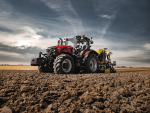The strength of the kiwifruit industry was a key factor behind MyFarm’s second kiwifruit venture, a proposed $9 million orchard development in the Franklin district, just south of Auckland.
Zespri’s sound marketing and value-add strategy contributed to MyFarm’s decision to get into kiwifruit rather than take other paths it had investigated, national sales manager Grant Payton told Rural News.
MyFarm has traditionally been a dairy investment company and latterly moved into sheep and beef. The Franklin plan is its second kiwifruit venture; the first is in the Bay of Plenty.
The company wants to raise $9 million for the Karaka Orchards Ltd Partnership, which would buy 42ha of bare land plus a 24ha established green kiwifruit orchard. The orchards would be managed and developed by a vertically integrated orchard, management, pack house and cool store operator, Punchbowl Packco, which has grown kiwifruit in Franklin since the early 1980s and owns or leases 17 orchards in the Auckland region. It is majority owned by the Craig family and directors include Comvita and Craigs Investment Partners chairman Neil Craig.
Executive director Andrew Watters says orchard land values in Auckland are much lower than in the Bay of Plenty, where a development could cost 40% more.
Payton says MyFarm’s first kiwifruit venture was to buy orchards in the Bay of Plenty where they work with orchard manager GroPlus.
The Franklin proposal is on a larger scale. Long-term investors with a minimum of $250,000 are sought. Cash from the existing orchard would help fund development; no cash returns are forecast for the first five years but returns of at least 9% are seen long term.
Payton says the green crop yield of the existing 24.6ha Punchbowl orchard at Kingseat has averaged 10,300 trays annually over the last five years; the Bay of Plenty average is about 8500-9000 trays.
The planned greenfields orchard, which will be converted to 30ha of green kiwifruit, will use artificial shelterbelts. Payton says these are instant, don’t compete for water and nutrients, and allow vines to be planted right up to the shelter; horizontal artificial belts are being assessed for the site, which give more protection from the elements.
They plan to take over the greenfields site from March 1 next year. They will start building the artificial shelter then plant over the next two-three years, staggering the planting and development.
As funds are generated from the existing orchards, the profits will offset the need for debt and extra capital from investors, he says. They also see potential to develop the existing orchard.
The new orchard will also be planted in green with the option to buy licences to grow new varieties when they are released.
Regional plans show the area being targeted for doubling of production and population in the next 30 years so there would be a capital gain for investors, Payton says.
While dairy farms have been its traditional model, the company always intended to add other products.
“Before we moved into kiwifruit we did a lot of research into other sectors and kiwifruit is one we found a lot of affinity with because of the strength of Zespri, the size, the cooperative structure and its sound strategy of adding value to its products.”



















